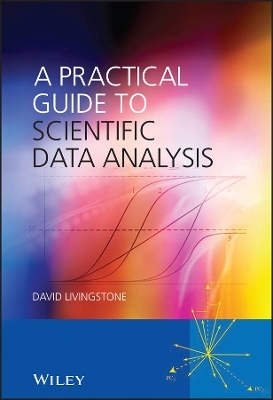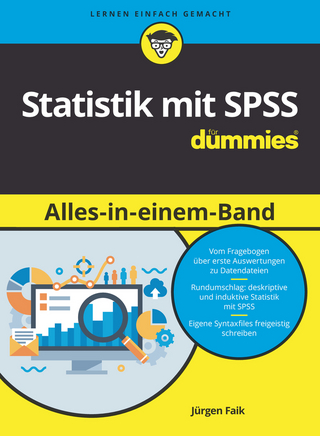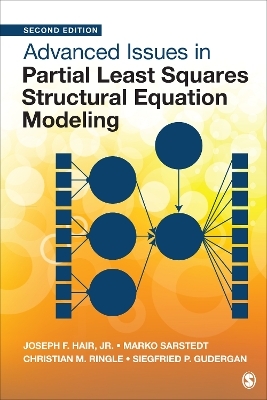
A Practical Guide to Scientific Data Analysis
John Wiley & Sons Inc (Verlag)
978-0-470-85153-1 (ISBN)
Inspired by the author's need for practical guidance in the processes of data analysis, A Practical Guide to Scientific Data Analysis has been written as a statistical companion for the working scientist. This handbook of data analysis with worked examples focuses on the application of mathematical and statistical techniques and the interpretation of their results. Covering the most common statistical methods for examining and exploring relationships in data, the text includes extensive examples from a variety of scientific disciplines.
The chapters are organised logically, from planning an experiment, through examining and displaying the data, to constructing quantitative models. Each chapter is intended to stand alone so that casual users can refer to the section that is most appropriate to their problem.
Written by a highly qualified and internationally respected author this text:
Presents statistics for the non-statistician
Explains a variety of methods to extract information from data
Describes the application of statistical methods to the design of “performance chemicals”
Emphasises the application of statistical techniques and the interpretation of their results
Of practical use to chemists, biochemists, pharmacists, biologists and researchers from many other scientific disciplines in both industry and academia.
David J. Livingstone is the author of A Practical Guide to Scientific Data Analysis, published by Wiley.
Preface xi
Abbreviations xiii
1 Introduction: Data and Its Properties, Analytical Methods and Jargon 1
1.1 Introduction 2
1.2 Types of Data 3
1.3 Sources of Data 5
1.3.1 Dependent Data 5
1.3.2 Independent Data 6
1.4 The Nature of Data 7
1.4.1 Types of Data and Scales of Measurement 8
1.4.2 Data Distribution 10
1.4.3 Deviations in Distribution 15
1.5 Analytical Methods 19
1.6 Summary 23
References 23
2 Experimental Design – Experiment and Set Selection 25
2.1 What is Experimental Design? 25
2.2 Experimental Design Techniques 27
2.2.1 Single-factor Design Methods 31
2.2.2 Factorial Design (Multiple-factor Design) 33
2.2.3 D-optimal Design 38
2.3 Strategies for Compound Selection 40
2.4 High Throughput Experiments 51
2.5 Summary 53
References 54
3 Data Pre-treatment and Variable Selection 57
3.1 Introduction 57
3.2 Data Distribution 58
3.3 Scaling 60
3.4 Correlations 62
3.5 Data Reduction 63
3.6 Variable Selection 67
3.7 Summary 72
References 73
4 Data Display 75
4.1 Introduction 75
4.2 Linear Methods 77
4.3 Nonlinear Methods 94
4.3.1 Nonlinear Mapping 94
4.3.2 Self-organizing Map 105
4.4 Faces, Flowerplots and Friends 110
4.5 Summary 113
References 116
5 Unsupervised Learning 119
5.1 Introduction 119
5.2 Nearest-neighbour Methods 120
5.3 Factor Analysis 125
5.4 Cluster Analysis 135
5.5 Cluster Significance Analysis 140
5.6 Summary 143
References 144
6 Regression Analysis 145
6.1 Introduction 145
6.2 Simple Linear Regression 146
6.3 Multiple Linear Regression 154
6.3.1 Creating Multiple Regression Models 159
6.3.1.1 Forward Inclusion 159
6.3.1.2 Backward Elimination 161
6.3.1.3 Stepwise Regression 163
6.3.1.4 All Subsets 164
6.3.1.5 Model Selection by Genetic Algorithm 165
6.3.2 Nonlinear Regression Models 167
6.3.3 Regression with Indicator Variables 169
6.4 Multiple Regression: Robustness, Chance Effects, the Comparison of Models and Selection Bias 174
6.4.1 Robustness (Cross-validation) 174
6.4.2 Chance Effects 177
6.4.3 Comparison of Regression Models 178
6.4.4 Selection Bias 180
6.5 Summary 183
References 184
7 Supervised Learning 187
7.1 Introduction 187
7.2 Discriminant Techniques 188
7.2.1 Discriminant Analysis 188
7.2.2 SIMCA 195
7.2.3 Confusion Matrices 198
7.2.4 Conditions and Cautions for Discriminant Analysis 201
7.3 Regression on Principal Components and PLS 202
7.3.1 Regression on Principal Components 203
7.3.2 Partial Least Squares 206
7.3.3 Continuum Regression 211
7.4 Feature Selection 214
7.5 Summary 216
References 217
8 Multivariate Dependent Data 219
8.1 Introduction 219
8.2 Principal Components and Factor Analysis 221
8.3 Cluster Analysis 230
8.4 Spectral Map Analysis 233
8.5 Models with Multivariate Dependent and Independent Data 238
8.6 Summary 246
References 247
9 Artificial Intelligence and Friends 249
9.1 Introduction 250
9.2 Expert Systems 251
9.2.1 LogP Prediction 252
9.2.2 Toxicity Prediction 261
9.2.3 Reaction and Structure Prediction 268
9.3 Neural Networks 273
9.3.1 Data Display Using ANN 277
9.3.2 Data Analysis Using ANN 280
9.3.3 Building ANN Models 287
9.3.4 Interrogating ANN Models 292
9.4 Miscellaneous AI Techniques 295
9.5 Genetic Methods 301
9.6 Consensus Models 303
9.7 Summary 304
References 305
10 Molecular Design 309
10.1 The Need for Molecular Design 309
10.2 What is QSAR/QSPR? 310
10.3 Why Look for Quantitative Relationships? 321
10.4 Modelling Chemistry 323
10.5 Molecular Fields and Surfaces 325
10.6 Mixtures 327
10.7 Summary 329
References 330
Index 333
| Erscheint lt. Verlag | 1.1.2010 |
|---|---|
| Verlagsort | New York |
| Sprache | englisch |
| Maße | 158 x 229 mm |
| Gewicht | 544 g |
| Themenwelt | Mathematik / Informatik ► Mathematik ► Computerprogramme / Computeralgebra |
| Naturwissenschaften ► Chemie | |
| ISBN-10 | 0-470-85153-8 / 0470851538 |
| ISBN-13 | 978-0-470-85153-1 / 9780470851531 |
| Zustand | Neuware |
| Haben Sie eine Frage zum Produkt? |
aus dem Bereich


